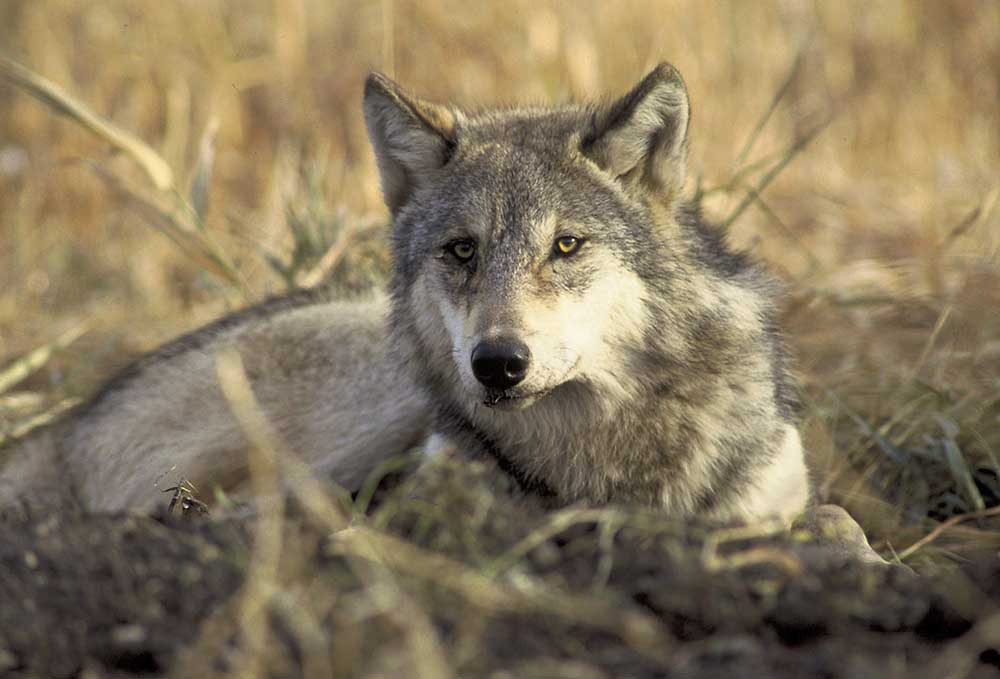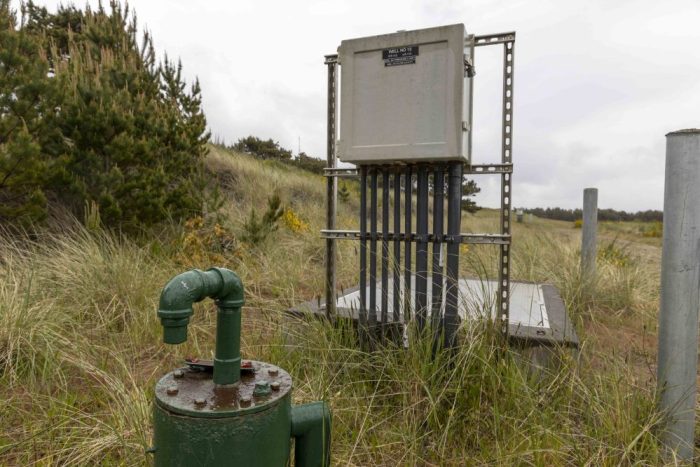Washington state wildlife officials resisted sending copter, sheriff to save woman treed by wolves
Published 12:15 pm Wednesday, July 18, 2018

- A gray wolf like the ones suspected of cornering a woman up a tree.
Washington state wildlife managers initially opposed sending a helicopter or a search-and-rescue team to save a woman treed by wolves in the Okanogan-Wenatchee National Forest, according to recordings and summaries of emergency calls.
The state Department of Natural Resources pushed back and prepared to dispatch an air crew that eventually executed a swift rescue. Notes from a call between Department of Natural Resources dispatcher Jill Jones and a wildlife officer summarized the Washington Department of Fish and Wildlife’s position, and her position, shortly before the helicopter launched.
“No helicopter. Federally listed species. Three WDFW personnel saying so,” according to call log.
“We are more concerned for her life than the listed animal,” Jones told the wildlife officer. “He indicated that she is safe up in the tree. … I told him that we do not know how safe she is. I don’t know how stout the tree is, and if the limbs will continue to hold her or how long she can hold on.”
Minutes later, Department of Fish and Wildlife and U.S. Fish and Wildlife Service officials, at the request of Department of Natural Resources wildfire supervisor Chuck Turley, OK’d an air rescue. Within a half hour, the woman was safe in the Department of Natural Resources helicopter piloted by Devin Gooch. The wolves had scattered as Gooch flew overhead before landing in a meadow.
The swift air rescue — reaching the woman by foot would have taken two to three hours, officials estimated — ended a hectic 45 minutes in which state, federal and local agencies discussed what to do.
Department of Fish and Wildlife wolf policy coordinator Donny Martorello said Wednesday that wildlife biologists familiar with wolf behavior thought the woman was not in immediate danger. “I think from their lens they were thinking there was a simpler solution,” he said.
“To tell the helicopter not to go was not the right call, and we have to own that,” Martorello said. “The right call was to send the helicopter. It goes without saying we value human life over everything else.”
Okanogan County, in north-central Washington, has had relatively few wolf incidents compared to Ferry and Stevens counties to the east. Sheriff Frank Rogers said the incident went “sideways,” leaving him angry that the Department of Fish and Wildlife told the county’s search-and-rescue team to “stand down.”
The next day, a federal biologist warned deputies hiking to view the scene of the incident to not harass wolves, he said.
“I don’t know who’s making the calls and telling us we can’t be involved. You can’t tell me not to be involved. It’s my county,” Rogers said. “Whether it’s wolves or a guy with a gun, we’re going to go.”
Rogers said that he wanted deputies to do a follow-up investigation to assess the threat to public safety.
“I just don’t want another incident,” he said. “All we want to know is what we’re dealing with.”
U.S. Fish and Wildlife Service spokeswoman Ann Froschauer said the federal agency has no opposition to the sheriff’s office doing its own investigation. “It’s certainly the role of local law enforcement,” she said.
Authorities have not released the woman’s name, citing her wish to not be identified. “We would love to talk to the woman,” Rogers said.
Martorello said Turley, who works in the same state building in Olympia, came to his office and said the Department of Natural Resources wanted to send a helicopter. Martorello said he put Turley on the phone with Gregg Kurz, the lead carnivore biologist in the state for the federal Fish and Wildlife Service. Kurz approved the helicopter.
Froschauer said she happened to be waiting with Kurz for a meeting on grizzly bears to start when he got the call. “Gregg said absolutely go for it. There was not hesitation on our part,” she said.
Before getting clearance from the wildlife agencies, Department of Natural Resources wildfire operations manager Aaron Schmidt already had approved sending the helicopter, as had the Forest Service, according to state records.
At one point, according to call logs, the agency was prepared to “launch the rotor and will deal with aftermath of WDFW later.”
Shortly before the helicopter lifted off, Jones, the dispatcher, called and updated an Okanogan County dispatcher on the rescue.
“When I talked to Fish and Wildlife, they said, ‘Nope. That’s not search and rescue. That’s just us. And no helicopter,” Jones said.
“For goodness sakes, somebody needs to figure it out,” the county dispatcher said.
“I don’t know how long this girl can hang in the tree,” Jones said. “ … so we’re finally just launching a helicopter.”
The flight from Omak to the woman took 14 minutes, according to Department of Natural Resources.
Eric Gardner, the assistant director for the wildlife program at the Department of Fish and Wildlife, said the department will work to be prepared if there’s a similar incident. “I know it will be a topic of conversation and area of improvement,” he said.





